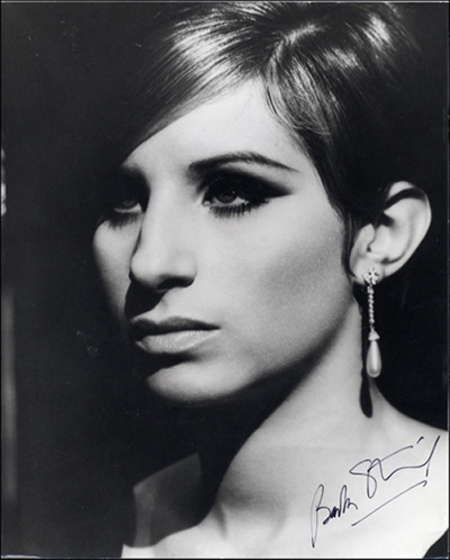But wait! There's more!
(Inasmuch as I want to make your life easier, I want to prove a point.)
Yes, Grammar Nazis are brutal. One or two of them may be counting how many times I've failed at grammar right at this minute. Fortunately I am not a member of their species, but I represent a less aggressive (and quite long-suffering) group of people that is profoundly critical about a particular thing: people's pitch. You see, I admit that I'm a so-called Pitch Nazi. Although I do understand that some people are naturally tone-deaf (God bless them), there are some that I just can't tolerate. Because I have a pitch-sensitive ear, you could imagine how I cringe whenever I hear popular singers on local television going out-of-tune with their "birits" or even simply with their melodies. It's so painful that it's like hearing a fingernail being scraped on a blackboard. (Take note, I also know whether a person singing out of tune is doing it intentionally or not.) With fifteen years worth of formal musical training, I guess I've developed, shall I say, a "discriminating ear". (Personally, I blame choral training for making it more severe.)

Mein Fuhrer.
So what does my being a Pitch Nazi got to do with Perception? Well, for one thing, it is important that a bona fide Pitch Nazi has a legitimate and measurable talent in pitch discrimination. Consider it this way, one cannot call him/herself a Grammar Nazi if he/she scored low in the English part of the SATs. It is imperative that a Pitch Nazi scores high in pitch, tone, melody and rhythm tests. Having said that, I've explored a battery of tests online - those with extensive research behind them, of course - and urge you, my reader, to see if you're musically adept as well.
The well-known online test for tone deafness is found in musicianbrain.com (take the test here) and is based on Dr. Gottfried Schlaug's intensive research on the relationship of pitch discrimination and the Heschl's gyrus. Another test is created by J. Mandell, a colleague of Schlaug, and it measures adaptive pitch. As you take Mandell's test, you will hear middle-range beeps (pure tones) that differ in either high or low amounts of frequency. As you continue to get better (or worse), the stimuli will adapt to your responses by getting lower or greater in terms of pitch difference. We remember from our lesson that frequency is related to pitch, and high frequency means perception of high pitch. Apparently, a person with perfect pitch can hear as much as +/-0.8 Hz tone difference. (Yours truly got a 1.2) The average person can hear a tonal difference of 3.98 Hz based on a population of 11,761 people who took the test online.
Aside from pure tones, you can also test if you're in tune with melodies by taking the Distorted Tunes test. (Take the test here) It helps that you are aware of the melodies being played (like the Star-Spangled Banner or whatever) but it does take into account simply whether or not you noticed that the melody has changed to another tune. This standardized survey is based from Dr. Dennis Drayna's research with the National Institute on Deafness and other Communication Disorders in the US.

Let me know your scores by posting below!
Finally, there is the Musical Ear Test (MET) designed by Wallentin and colleagues (2010) that measures musical abilities in both musicians and non-musicians in an objective way with a relatively short duration of time. The test consists of 104 trials in which participants judge whether two musical phrases are identical or not. These phrases are of the following types: melodic and rhythmical.
(A) In their first experiment, they tested whether the MET is capable of distinguishing professional musicians and non-musicians. Using 40 musicians (10 male; 10 female) and 20 non-musicians (9 male; 11 female) as their participants, they found out the MET can discriminate between the two types of people.
(B) In their second experiment, they tested if the overall result of the MET is as significant as a standardized test for musical expertise, namely the imitation test. Using 16 professional jazz/rock musicians and 5 non-musicians, they found out that the results of the MET are strongly strongly correlated with the results of the imitation test.
(C) Lastly, they tested whether the MET can distinguish groups of non-musicians, amateurs and professional musicians. Sixty (60) participants took part of the experiment (18 professional, 21 amateur and 21 non-musicians). They found out that the internal consistency (Cronbach's alpha) for the whole test was a high 0.87.
They also found that performance on the MET was significantly correlated with the amount of practice. Their findings show that the role of musical talent is limited and that the role of extensive practice should be emphasized. Indeed. Before I retired my choral singing career (or the lack of it!), I had the sound of middle C plastered on my memory. As we've learned, musical practice is a strong insight related to the experience-dependent plasticity of the brain. Practice makes pitch perfect.
I'd like to know how I fare on the MET but it's not available online. Oh well.
Sources:
Wallentin, M., Nielsen, A., Friis-Ollivarius, M., Vuust, C. & Vuust, P. (2010). The Musical Ear Test, a new reliable test for measuring musical competence. Learning and Individual Differences. 20, 188-196.



No comments:
Post a Comment